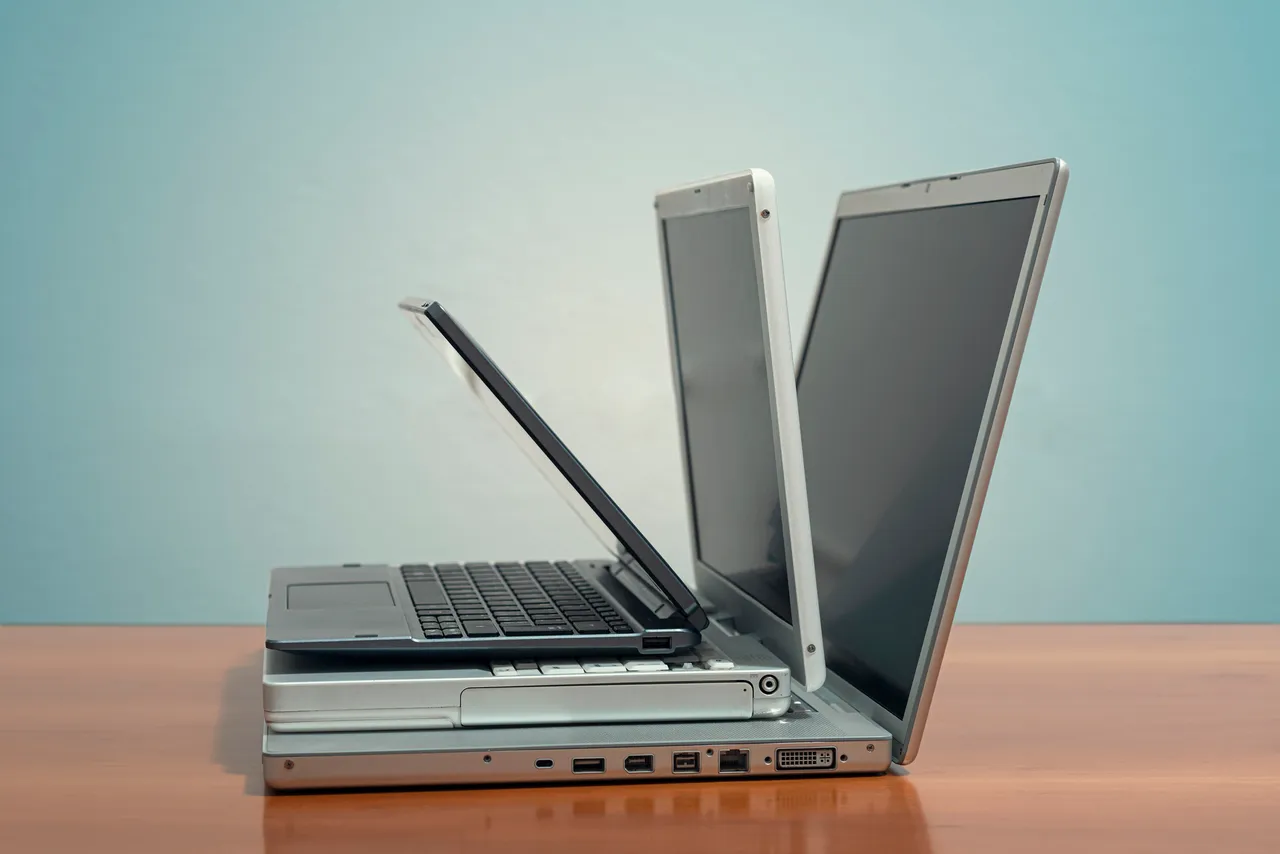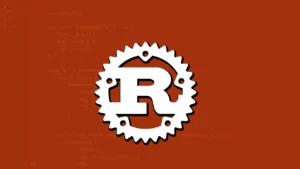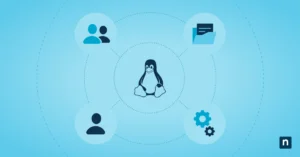Give your old computer a new lease on life with Linux! This guide will walk you through how to make your older computer last longer. You’ll learn how to save money, help the environment, and keep a reliable machine running. Linux has many ways to breathe new life into your aging hardware.
Key Takeaways
- Discover how to breathe new life into aging computer hardware using Linux
- Learn to save costs and reduce environmental impact by extending the lifespan of your legacy systems
- Explore the benefits of using lightweight Linux distributions on older computers
- Master the art of performance tuning and optimization to keep your old machine running smoothly
- Understand the importance of routine maintenance and troubleshooting for long-term Linux system health
Why Revive an Old Computer with Linux?
In today’s fast-paced world, we often feel the need to upgrade our devices quickly. But, there’s a way to make your old computer work better without spending a lot of money. This method uses Linux, a free operating system that can make old hardware work well again.
Cost Savings and Environmental Benefits
Using Linux on an old computer can save you a lot of money. It’s free to download and use, so you don’t have to pay for licenses. This is great for those who want to spend less on technology without losing out on performance.
But there’s more to it. By using Linux, you’re also helping the planet. You’re keeping your old computer from being thrown away, which means less electronic waste. This is good for the environment.
Extend Hardware Lifespan
Linux is designed to be lightweight and efficient. It works well on older computers that might not handle other operating systems. By picking the right Linux version, you can make your computer last longer. This saves you money and supports sustainable technology.
So, if you want to make your old computer useful again and save money, try Linux. It’s a smart choice that helps your wallet and the planet.

Choosing the Right Linux Distribution
Choosing the right Linux distribution is key when reviving an old computer. Lightweight Linux distros like Lubuntu, Xubuntu, and Puppy Linux are great for older or less powerful hardware. They focus on performance and saving resources, helping you get the most out of your old computer.
Lightweight Linux Distros for Older Hardware
Lubuntu and Xubuntu are top picks for giving an older PC new life. They’re based on Ubuntu and use LXDE and XFCE desktops, which are easy on the system and quick. Puppy Linux is another great choice. It’s super customizable and can run from a USB drive or CD, perfect for older computers.
|
Linux Distribution |
Desktop Environment |
Minimum System Requirements |
|---|---|---|
|
Lubuntu |
LXDE |
512 MB RAM, 5 GB storage |
|
Xubuntu |
XFCE |
512 MB RAM, 5 GB storage |
|
Puppy Linux |
Customizable |
128 MB RAM, 1 GB storage |
These Linux distros can make your old computer feel new again. They help you revive old pc with linux for a smooth and fast experience, even on older hardware.
“Linux distributions like Lubuntu, Xubuntu, and Puppy Linux are true lifesavers for older computers. They let you keep your hardware going and enjoy a modern, fast computing experience.”
Preparing Your Old Computer for Linux
Before you start using Linux on your old computer, you need to prepare it. Make sure your hardware works well and your data is safe. This will make the switch to Linux smoother.
Backup Your Data
First, back up any files, documents, and personal data on your old computer. This keeps your important info safe during the Linux installation. Use an external hard drive, cloud storage, or a USB flash drive for backup.
Check Hardware Compatibility
Not all Linux versions support older hardware. Research your computer’s parts to make sure they work with your chosen linux on old hardware version. This prevents future problems.
Assess System Requirements
Before installing Linux, check if your computer meets the needed specs. Look at processor speed, RAM, and storage space. A lightweight Linux distro is best for older machines.
These steps will help you switch to Linux on your old computer smoothly. With planning and care, you can make your old hardware run better with an open-source operating system.
|
Task |
Importance |
Difficulty Level |
|---|---|---|
|
Backup Data |
High |
Low |
|
Check Hardware Compatibility |
High |
Medium |
|
Assess System Requirements |
High |
Low |
Installing Linux on an Older Machine
Revitalizing an aging computer with the linux installation guide can make your hardware feel new again. You might want to save money, help the environment, or just make your device last longer. Installing Linux on an older machine is easy and fulfilling.
Step-by-Step Installation Guide
Installing Linux on an older computer can differ based on your hardware and the Linux version you pick. But, here are the basic steps:
- Pick a lightweight Linux version made for older hardware, like Lubuntu or Xubuntu.
- Make a bootable USB drive or DVD with the Linux setup files.
- Start your computer from the setup media and follow the instructions on the screen.
- If needed, divide your hard drive to fit the Linux setup.
- Finish the setup, setting up your preferences and settings.
Dual-Booting with Windows
If you’re not ready to switch fully to Linux, consider a dual-boot setup. This lets you use both Linux and your current Windows system. It’s a great way to try Linux without losing your Windows setup.
To set up a dual-boot system:
- Do a standard Linux install but pick the dual-boot option.
- You’ll be asked to set aside space for the Linux part on your hard drive during installation.
- After installing, you can choose to start in Linux or Windows when your computer turns on.
By using these steps, you can refresh your older computer. You can enjoy the perks of Linux, whether you go all in or just dual-boot.
Everything You Can Do to Keep an Old Computer Running with Linux
Reviving an aging computer with Linux is a smart and green choice. It uses open-source software to make your old hardware last longer. We’ll share ways to keep your old computer running well with Linux.
Optimize System Settings
Optimizing your Linux system is key to keeping an old computer running. Adjust settings to use less CPU and memory. Also, turn off visual effects to save resources.
Manage Linux Resources Effectively
Managing resources well is vital for an aging Linux computer. Use tools to watch CPU, memory, and disk usage. Find and stop any processes you don’t need. This makes your system run better and avoids slowdowns.
Perform Routine Maintenance Tasks
Regular maintenance keeps an old computer running well. Clean up files, manage logs, and update your Linux with the latest security patches. These steps help your hardware last longer and work better.
|
Technique |
Description |
Benefits |
|---|---|---|
|
Optimize System Settings |
Tweak power, visual, and other settings to reduce resource usage |
Improved performance, extended hardware lifespan |
|
Manage Linux Resources |
Monitor and optimize CPU, memory, and disk usage |
Enhanced efficiency, smoother operation |
|
Perform Routine Maintenance |
Clean up file system, manage logs, and keep Linux up-to-date |
Improved stability, security, and longevity |
Using these strategies, you can make your aging computer last longer with Linux. With some effort, you can make your hardware work better and save money and the planet.
Performance Tuning and Optimization
To keep your old computer running well with Linux, you need to tune and optimize its performance. This means adjusting settings like power use, memory, and how your desktop looks. Also, getting rid of bloatware and services you don’t need can make your system faster and more responsive.
Tweaking System Settings
Improving Linux on older hardware starts with tweaking settings. This includes:
- Optimizing power use to cut down on CPU and memory
- Setting up memory to use RAM more efficiently
- Changing desktop settings to use fewer resources
- Adjusting file and disk caching for better I/O speed
Removing Bloatware and Unnecessary Services
To make your Linux run better, get rid of bloatware and services you don’t need. Bloatware is software that comes pre-installed but you don’t want. It uses up system resources and slows things down. By removing these apps and services, you free up memory, CPU, and disk space. This makes your system faster and more efficient.
|
Action |
Benefit |
|---|---|
|
Remove Bloatware |
Frees up system resources and improves overall performance |
|
Disable Unnecessary Services |
Reduces background processes and memory consumption |
Using these tips for performance tuning and optimization, you can remove bloatware. This way, your older Linux computer will keep running smoothly and efficiently.
“Optimizing an older computer’s performance is essential to extending its usable lifespan and getting the most out of your existing hardware.”
Maintaining and Updating Your Linux System
Keeping an old computer running smoothly with Linux means regular maintenance and updates. By doing these tasks often, you can make your hardware last longer and keep it running well. We’ll look at the key activities you need to do to keep your Linux system in top shape.
Routine Maintenance Tasks
It’s important to keep your Linux system running well. Here are some key tasks you should do often:
- System Updates: Updating your Linux regularly is key for security, fixing bugs, and getting new features. Make a plan to check and install updates as they come.
- Clearing Temporary Files: Your system can fill up with temporary files like cached data and logs over time. Clean these files out now and then to save space.
- Monitoring System Logs: Check your system logs often to spot any issues or errors early. This can help you fix problems before they get worse.
- Managing Storage Space: Watch how full your storage is and delete files you don’t need to keep enough free space.
- Optimizing Performance: Adjust your system settings and stop any services or apps you don’t use to make your Linux run better and faster.
Adding these maintenance tasks to your routine will help your Linux system stay in great shape for a long time.
|
Maintenance Task |
Description |
Frequency |
|---|---|---|
|
System Updates |
Install the latest security patches, bug fixes, and feature updates for your Linux distribution. |
Weekly or monthly |
|
Clearing Temporary Files |
Remove cached data, log files, and other temporary files to free up storage space. |
Monthly or quarterly |
|
Monitoring System Logs |
Review system logs for any errors, warnings, or other potential issues. |
Weekly or biweekly |
|
Managing Storage Space |
Delete unnecessary files and data to maintain sufficient free space on your system. |
Monthly or as needed |
|
Optimizing Performance |
Tune system settings and remove unwanted services or applications to improve performance. |
As needed |
By following these linux system maintenance and linux updates tips, your old Linux computer will keep running well for a long time.
Troubleshooting Common Issues
Even the best Linux setup on an old computer can sometimes run into problems. But don’t worry – with the right skills, you can fix these issues quickly. We’ll look at common problems and how to solve them in this section.
Resolving Hardware Compatibility Problems
One big challenge with Linux on older hardware is making sure everything works together. Newer Linux versions might not work well with older parts. Here’s how to fix hardware compatibility issues:
- Look at the Linux distribution’s list of supported hardware to see if your computer’s parts are okay.
- If a specific part, like the graphics card or network adapter, is causing trouble, search for solutions or drivers for your Linux version.
- Think about using a lighter Linux version made for older hardware. They usually support older parts better.
- If nothing works, you might need to update or replace the hardware for a smooth Linux run.
By tackling hardware compatibility problems, you can keep your old computer running well with Linux. This way, it can keep up with new technology.
“With the right troubleshooting skills, you can quickly get your Linux system back on track, even on older hardware.”
Remember, the secret to fixing linux on old hardware is to be systematic and use community resources. Knowing how to handle troubleshoot linux issues means your old computer can keep running strong with Linux.
Conclusion
This guide shows you how to make your old computer run like new with Linux. You can save money, help the environment, or just keep your hardware going longer. Linux is a great way to revive old PCs with Linux and breathing new life into legacy systems.
With the right steps and Linux’s power, your old computer can do more. Linux makes old systems reliable and versatile. It turns outdated machines into useful ones, saving you money on new tech.
Try Linux on your old computer to see the difference. Linux lets you customize and improve your hardware. Start now for a greener and cheaper way to use technology.










